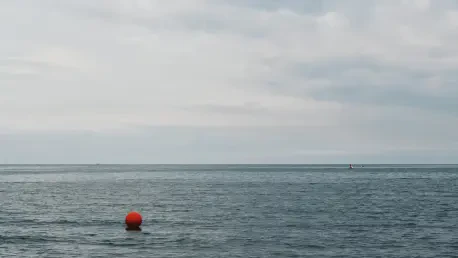The maritime industry faces escalating challenges as recent Houthi attacks on commercial vessels in the Red Sea threaten its security and stability. These events have not only rattled industry perceptions but also prompted reevaluations of maritime policies and risk assessments. The sinking of ships such as the Magic Seas and Eternity C, both managed by Greek operators, underscores the urgent need for a comprehensive examination of the risks imposed on global shipping routes. Insurance premiums for war risks have spiked dramatically, reaching levels nearly quadruple those from a few weeks ago. This sharp rise highlights the evolving threat landscape and reflects heightened caution among insurers. It’s essential to investigate the various dimensions of these developments to understand their implications on maritime safety, insurance, and international trade.
Impact on Maritime Insurance
The immediate consequence of recent Houthi attacks is a significant surge in war risk insurance premiums for ships traversing hazardous regions like the Red Sea. Industry participants have observed a steep climb from 0.3% to approximately 1% of a vessel’s insured value. This noticeable increase signifies a shift in the perceived hazards within these vital shipping lanes and indicates a heightened level of caution among insurance providers. Ships like the Magic Seas and Eternity C serve as stark reminders of the vulnerabilities present in these waters, compelling a reassessment of insurance strategies by companies fearful of similar militant threats. This surge in premiums represents the market’s response to these unpredictable activities and reflects the complex calculations insurers must navigate when determining risks.
Captain Rahul Khanna’s role as a global marine risk consultant at Allianz Commercial offers critical insights into the risks now influencing Red Sea transit. Khanna emphasizes the urgent reality of threats posed by militant groups like the Houthis, who could inspire similarly aggressive tactics around the globe. The concept of these attacks becoming models for other militant organizations to follow broadens the scope of insecurity in international waters. Insurance companies, while remaining operational, are adopting more cautious approaches with stricter underwriting thresholds. This industry shift may result in some insurers deeming the risks excessive. However, resilience persists as certain underwriters continue to offer coverage at increased rates, showcasing the insurance market’s adaptability.
Navigating Heightened Risks
Within this volatile environment, brokers and shipowners play a crucial role in managing insurance and risk strategies more effectively. Shifting targeting criteria for attacks require that these stakeholders conduct thorough independent assessments before embarking on high-risk transits. Despite assurances by groups such as the Houthis regarding selective engagement, shipping entities cannot afford complacency. It’s imperative that they prioritize proactive route planning to mitigate potential threats. Given the changing dynamics, altering traditional paths and favoring routes like the Cape of Good Hope could yield safer passage options. Such adjustments necessitate comprehensive planning but offer smoother navigation through dangerous territories, an essential consideration in safeguarding assets and crew.
The human dimension of these maritime incidents demands discussion as well. Violent encounters result in tragic outcomes, notably loss of life, and disrupt morale among seafarers. Mariners find themselves facing threats for which they are inadequately prepared, ultimately leading to a precarious situation that affects industry recruitment. As these assaults persist, the risk to the workforce hinders the industry’s growth, prompting calls for stronger protective measures. Ensuring that seafarers are equipped to handle potential attacks is essential, not just for their safety but for attracting new talent into an area vital to global commerce.
Diplomatic and Strategic Responses
Diplomatic responses to recent maritime threats illustrate an internationally unified stance denouncing such aggression. The UK’s UN Ambassador, Dame Barbara Woodward, champions tougher enforcement of Yemen arms embargoes to curb future assaults. While diplomatic rhetoric is potent, actual implementation of effective measures proves challenging. The gap between diplomacy and tangible action requires attention if the world hopes to prevent vulnerabilities to maritime threats. Enhanced surveillance and preemptive strategies are necessary components of a coordinated international approach to combat such threats. Yet balancing aspirations with feasible outcomes remains a demanding endeavor, underscoring the complexities inherent in achieving global security.
The article constructs a compelling narrative of an industry grappling with the constant specter of threats from unpredictable militant forces. As insurance and maritime entities face these challenges, the demand for improved international coordination becomes even more pronounced. Protective measures at sea are essential to sustain trade routes that form the backbone of the global economy. A collaborative effort among diplomats, insurers, operators, and the maritime workforce can fortify the industry and navigate it toward stability amidst uncertain conditions.
Future Considerations and Solutions
The recent Houthi attacks have led to a sharp rise in war risk insurance premiums for ships in dangerous areas like the Red Sea. Insurers have noted an increase from 0.3% to about 1% of a ship’s insured value. This jump highlights changing perceptions of danger in these crucial shipping routes and suggests greater caution among insurers. Ships such as the Magic Seas and Eternity C underscore the risks in these waters, prompting companies to rethink their insurance plans due to similar militant threats. The higher premiums are the market’s reaction to unpredictable threats, emphasizing the complex risk assessments insurers face.
Captain Rahul Khanna, a global marine risk consultant at Allianz Commercial, offers essential insights into the current risks in Red Sea transit. Khanna stresses the immediate danger of groups like the Houthis, who may inspire similar acts worldwide. This suggests a growing insecurity in international waters. Insurers are becoming more cautious, adjusting underwriting standards. Some might find risks excessive, but resilience is evident as some underwriters still provide coverage at higher rates, illustrating the insurance sector’s flexibility.









